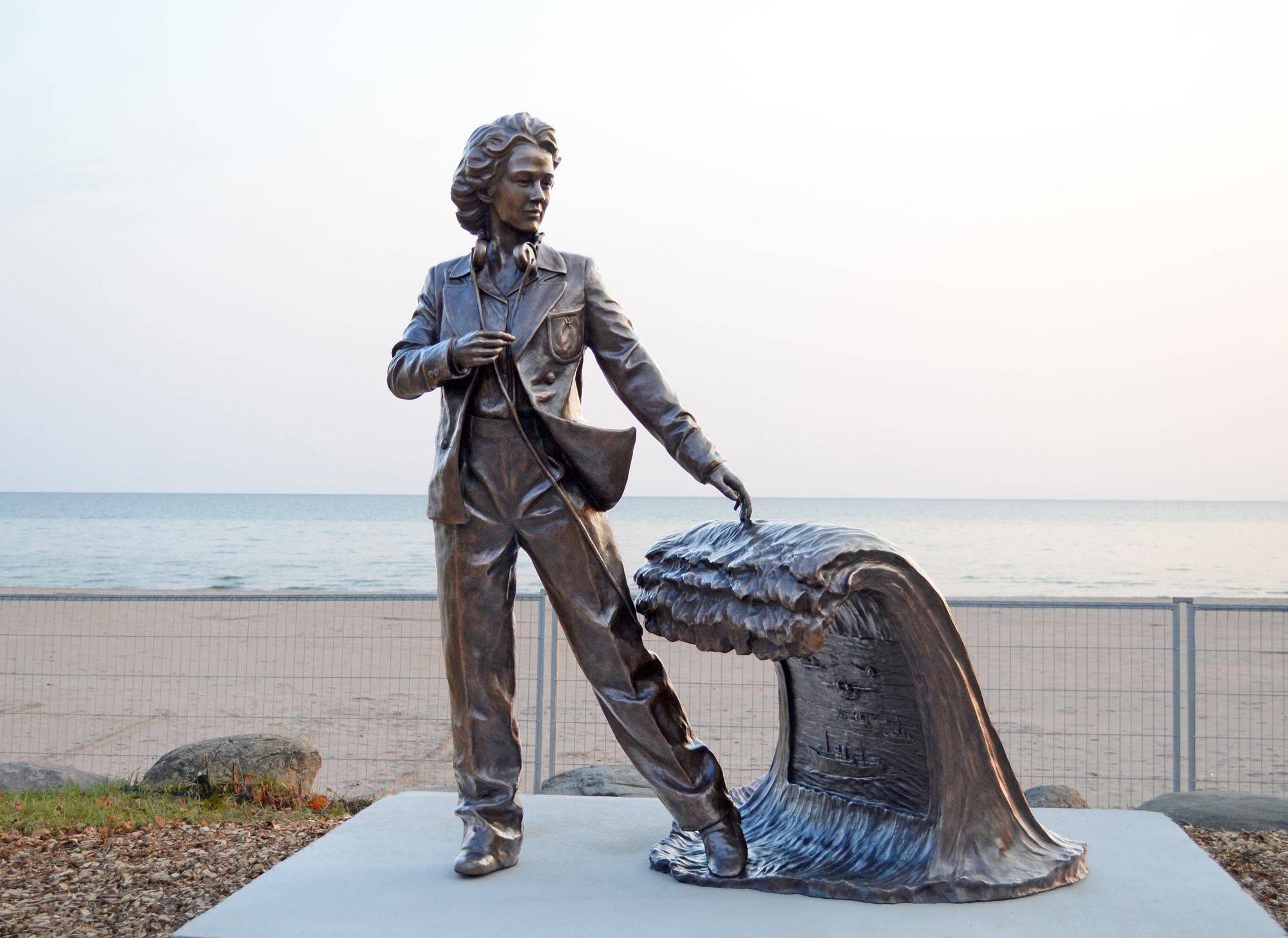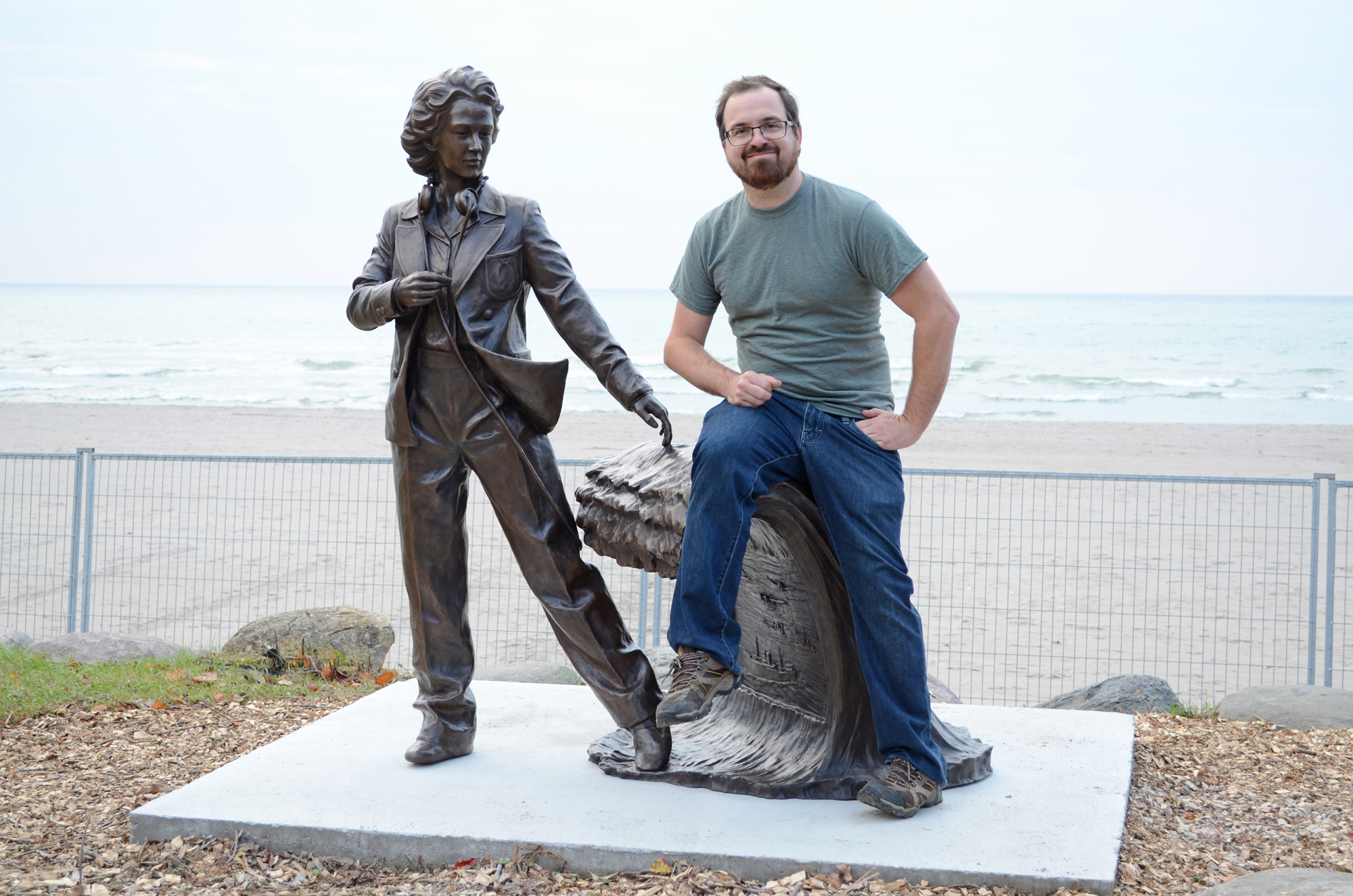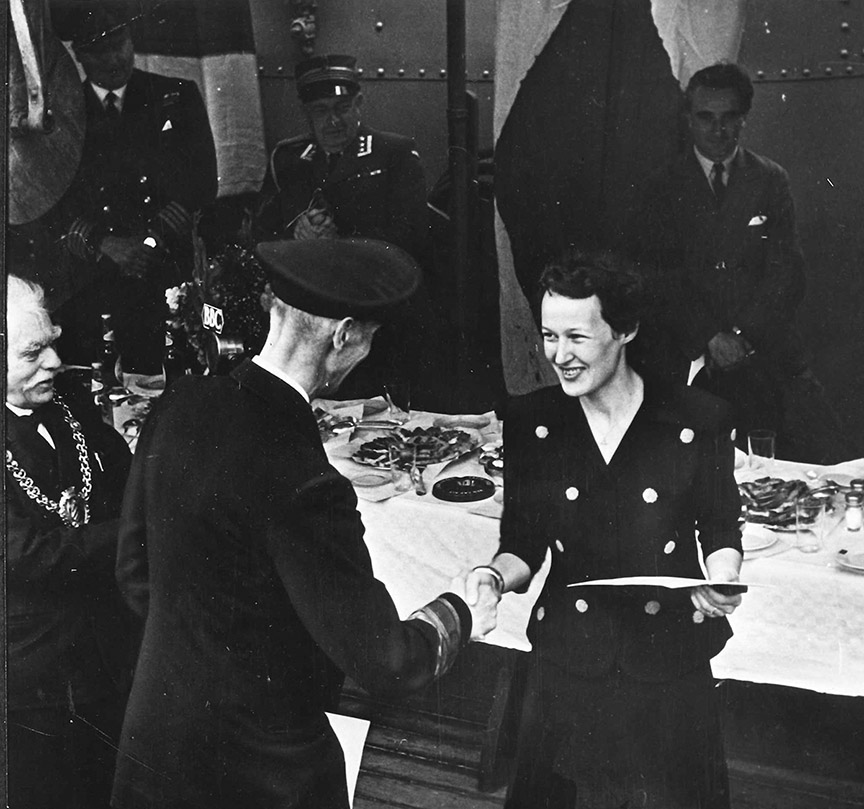Battle of the Atlantic Heroes: Fern Blodgett Sunde
Battle of the Atlantic Heroes / November 19, 2020
In 1941, during the Battle of the Atlantic, the Admiralty sent a secret letter to The Norwegian Shipping Mission expressing appreciation for the outstanding services rendered to the Allied cause by three Norwegian cargo ships. The letter praised the ships’ radio operators for the “exemplary manner” in which they followed route instructions and diversions designed to keep the merchant ships out of danger. Though not expressly stated in the letter from the Admiralty, German warships and U-boats were the primary danger.
The Mosdale, one of the ships praised, did in fact have a remarkable radio operator. Her name was Fern Blodgett, a young Canadian who was the first woman ever to serve deep sea as a wireless radio operator, also known as a “Sparks”.
Fern grew up in Cobourg, Ont., dreaming of sailing the high seas, even though she knew that ships at the time were not for girls. When the Second World War broke out, she was determined to serve Canada. Although some radio schools were reluctant to train women, she persisted and became the first Canadian woman to earn a Second Class Wireless Operator’s certificate.
Answering an urgent call for an operator, she made her way to Montreal. Gerner Sunde, the young Norwegian captain of the Mosdale - and Fern’s future husband - was shocked to see that his applicant was a woman. At the time, neither Canada nor Britain permitted women to work aboard naval and merchant ships at sea, but luckily Norway had no rule against it. The next thing Fern knew, she was a kriegsseiler – a war sailor – the only woman aboard the Mosdale, the only operator in the small radio room where equipment instructions were in languages she didn’t know, knowing a mistake on her part could send the ship into catastrophe, and where she became horribly seasick.
No one expected her to make that initial return voyage, but with great courage, resilience, and devotion to duty, Fern kept a bucket by her side, and sailed with the Mosdale for 78 of its recorded 96 transatlantic voyages. It was incredibly dangerous work – the sea was home to U-boats, mined waters, surface raiders, fog and terrifying storms. During the early years of the Battle of the Atlantic, ships were going down faster than they could be replaced. Norway’s British-controlled merchant ships, such as the Mosdale, were special targets.
When Germany invaded Norway and ordered the fleet back to German-occupied ports, not a single ship obeyed. In service of the Allied cause, Norway’s tankers and merchant ships made a significant contribution, but paid a high price. Norway had lost over half its fleet by the end of the war. Along with thousands of Canadians and Allies, Fern did her part during the Battle of the Atlantic to keep Allied forces provisioned. In 1943, King Haakon VII of Norway awarded Fern Blodgett Sunde the Norwegian War Medal – the first woman ever to receive the honour.
Fern served until the end of the war, and from time to time in its aftermath. In 1952, she left the sea to raise her two daughters, Fern and Solveig Ann, and to work in the garden she loved. Fern stayed in Norway after Gerner’s death in 1962. She never remarried.
Fern Blodgett Sunde opened the door to a sisterhood of Sparks, mostly Canadian and Scandinavian women. They followed her to sea, working on Norwegian merchant ships until technology replaced the wireless radio.
Of the ships mentioned in the Admiralty’s 1941 letter of praise, only the Mosdale survived the war.
In recognition of Fern’s contributions not only to the war effort but as a trailblazer for the women who followed her lead, a life-sized bronze monument titled “Make Waves” was created by Tyler Fauvelle, a professional sculptor based in Northern Ontario. The monument was unveiled at an event in Cobourg on October 17, 2020.
“The monument’s wave symbolizes the wave of social changes which came for Canadian women in the storm of war. It also evokes radio waves, as well as the waves of the sea as battlefield,” explained the piece’s creator, Mr. Fauvelle.
“[Fern is] stepping forward, with one foot emerging from the wave, but she’s also looking back. Forward is her persistence in breaking barriers, looking back is for remembrance.”
The artist also drew attention to the relief sculpted inside the wave, which alludes to Canada’s important role in the Battle. Included are depictions of the SS Athenia, the Canso amphibious aircraft, Hawker Hurricanes, Her Majesty’s Canadian Ship (HMCS) Waskesiu and HMCS Cobourg. He also lightly outlined U-boats at the horizon, to illustrate the danger that cost thousands upon thousands of Allied lives. “It was a privilege to create this lasting tribute to Canadians of a monumental generation, the men and women who fought and supported a necessary war,” said Mr. Fauvelle.
“Thousands didn’t live to see the peace that their sacrifice bought, and they were on my mind as I sculpted the clay.”2020 marks the 75th anniversary of the end of the Second World War and the end of the Battle of the Atlantic, and October was Women’s History Month in Canada.
With these dates in mind, a volunteer citizens’ committee, led by Dr. Leona Woods and Honourary Colonel Helen Vari, along with their community partner, the Cobourg Museum Foundation commissioned the ‘Make Waves’ monument.
The monument was funded in part by the Government of Canada through the Veterans Affairs Canada Commemorative Partnership Program. Charitable foundations, local businesses and individuals, as well as the Town of Cobourg, also made financial and in-kind contributions to the commemoration.
Page details
- Date modified:





